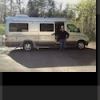
Well, at least it’s not going to erupt anytime soon. Probably. This has been a strange year at Yellowstone National Park, which indeed sits atop a supervolcano. Two months ago,...
Roadtreking : The RV Lifestyle Blog - Traveling North America in a small motorhome
Source
- Read more...
- 0 comments
- 604 views

